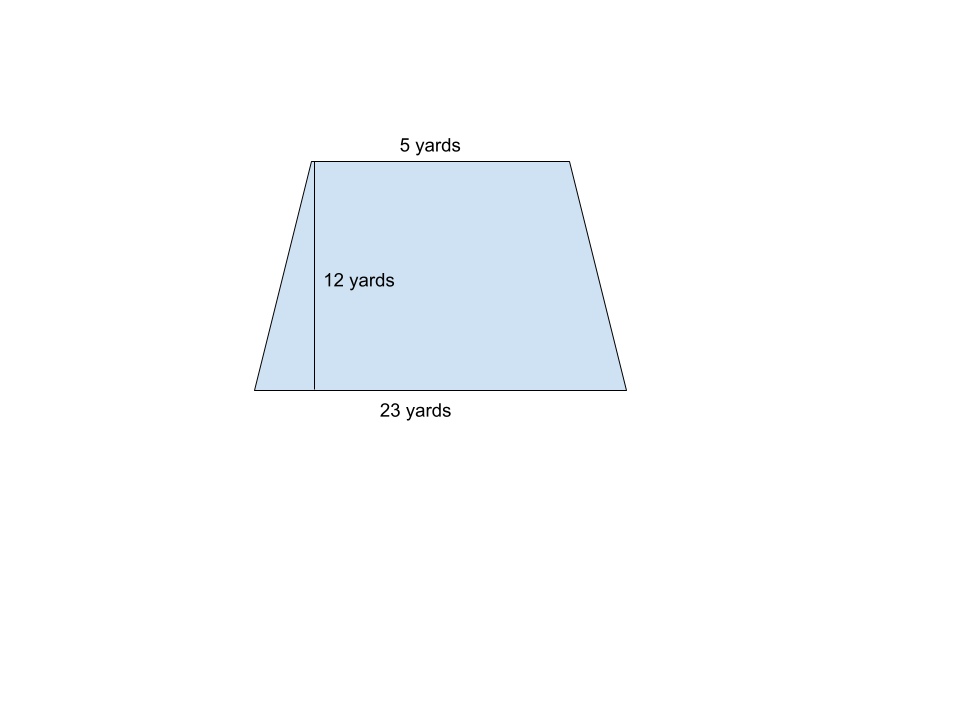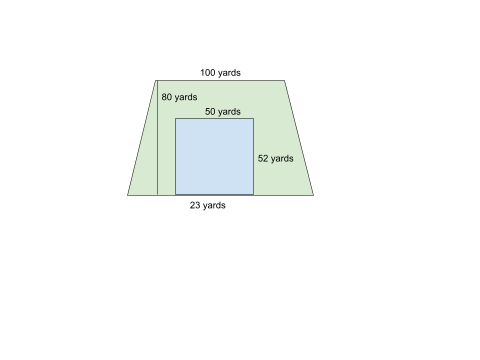6.GM.1.3 Find the area of right triangles, other triangles, special quadrilaterals, and polygons that can be decomposed into triangles and other shapes to solve real-world and mathematical problems.
In a Nutshell
Students now know how to calculate the area of rectangles, quadrilaterals (Special quadrilaterals includes parallelograms, rectangles and squares.) and triangles (See 6.GM.1.1 and 6.GM.1.2). Using this information, students can decompose composite polygons into these known shapes. Special care should be taken to make sure that students understand that area is additive and adding the area for individual portions of the polygon will result in the cumulative area of the entire shape. Use real-world problems such as finding the area of a room, etc. to show relevance.
Student Actions
|
Teacher Actions
|
-
Develop a deep and conceptual understanding of area as students decompose polygons into shapes such as triangles, squares, and rectangles.
-
Develop strategies for problem solving that will allow students to analyze a complex polygon and find an entry point for finding a summative area.
-
Develop mathematical reasoning to assess the reasonableness of area calculations by first estimating the answer for the problem.
-
Communicate mathematically through writing and discussion to justify strategies used to find area of composite shapes.
-
Develop a deep and flexible understanding of how to choose and label units appropriately.
-
Develop mathematical reasoning to make predictions to draw conclusions describing how changes in the dimensions of figures affect area.
-
Develop accurate procedural fluency by correctly applying formulas needed to find area of composite shapes.
|
-
Implement tasks that promote reasoning about area of composite shapes. Draw on student’s experience decomposing a rectangle or parallelogram into two triangles and extend that to polygons.
-
Facilitate meaningful discourse by engaging students in solving and discussing tasks that help students develop a sense of reasonableness about area of composite figures.
-
Support productive struggle with various area problems involving composite figures and encourage students to share ideas emphasizing multiple approaches to each problem (Ex: Discuss various ways to decompose the same shape to still get the same area.)
-
Build procedural fluency by facilitating student discussion by helping them learn to correctly apply formulas needed to find area of composite figures using conceptual understanding.
|
Key Understandings
|
Misconceptions
|
-
Area is additive and consists of the sum of non-overlapping regions of the composite figure.
-
It is possible to find the area of a shape by decomposing (taking apart) the figure into a known shape with a standard algorithm for area of rectangles, parallelograms and triangles.
|
-
Try to multiply each area of decomposed shapes to find the total area instead of adding because of the emphasis on multiplication with area (emphasized to separate area from perimeter), .
-
Have difficulty “seeing” which basic shapes (rectangles, triangles, and parallelograms) can be used to decompose a given polygon.
|
| Depth of Knowledge Level 1 Example |
Depth of Knowledge Level 2 Example |
Depth of Knowledge Level 3 Example |
|
Find the area of the trapezoid:

Credit: Jeana Day and Jeff Maib, Developed at the OSDE OKMath Region Meeting, February 2019
|
The picture below represents an office building with its surrounding lawn. What is the area of the lawn?

|
The picture below represents an office building with its surrounding lawn.
If one bag of grass seed costs $35 and covers 2,000 square feet, how much would it cost to seed the entire lawn?
 |
OKMath Framework Introduction
6th Grade Introduction